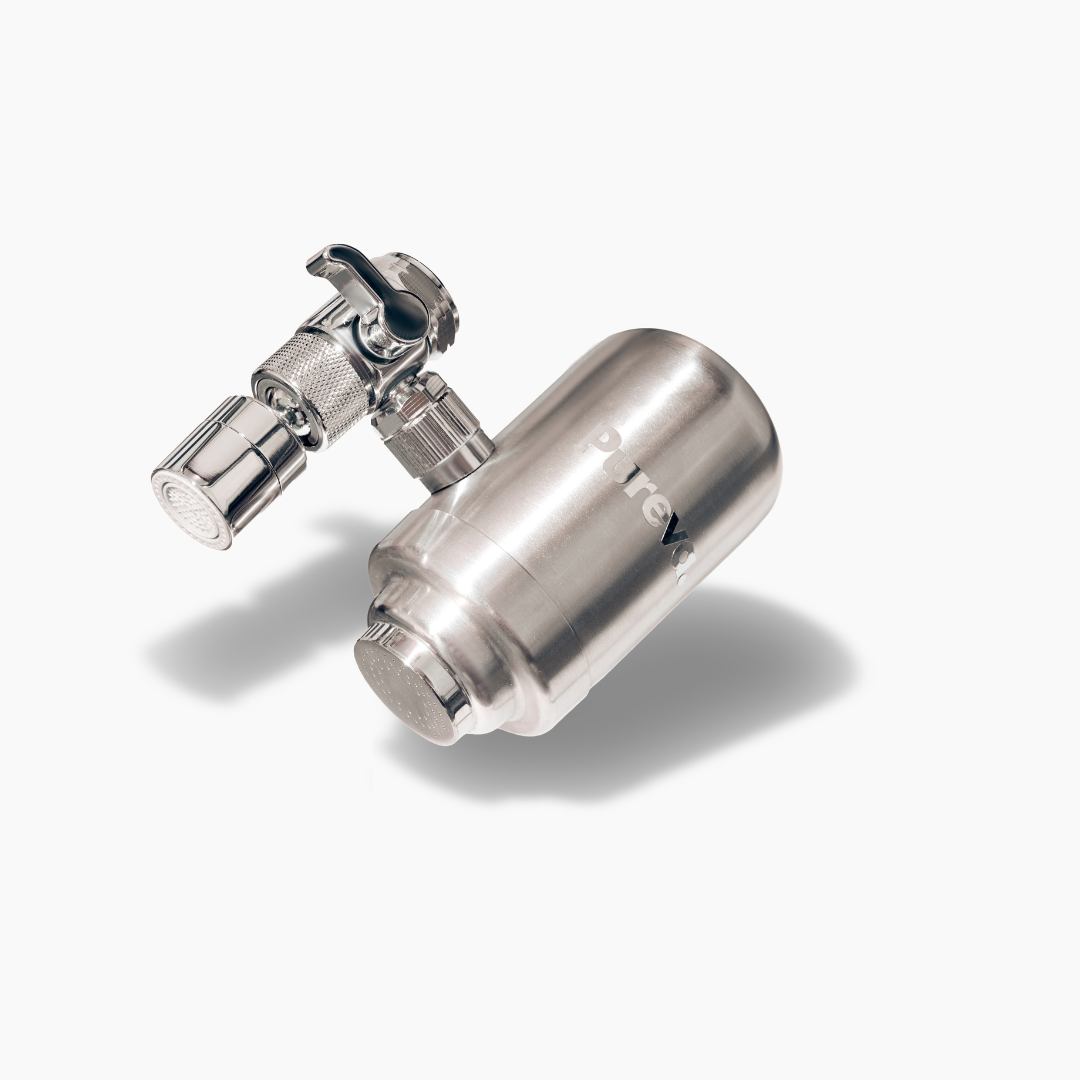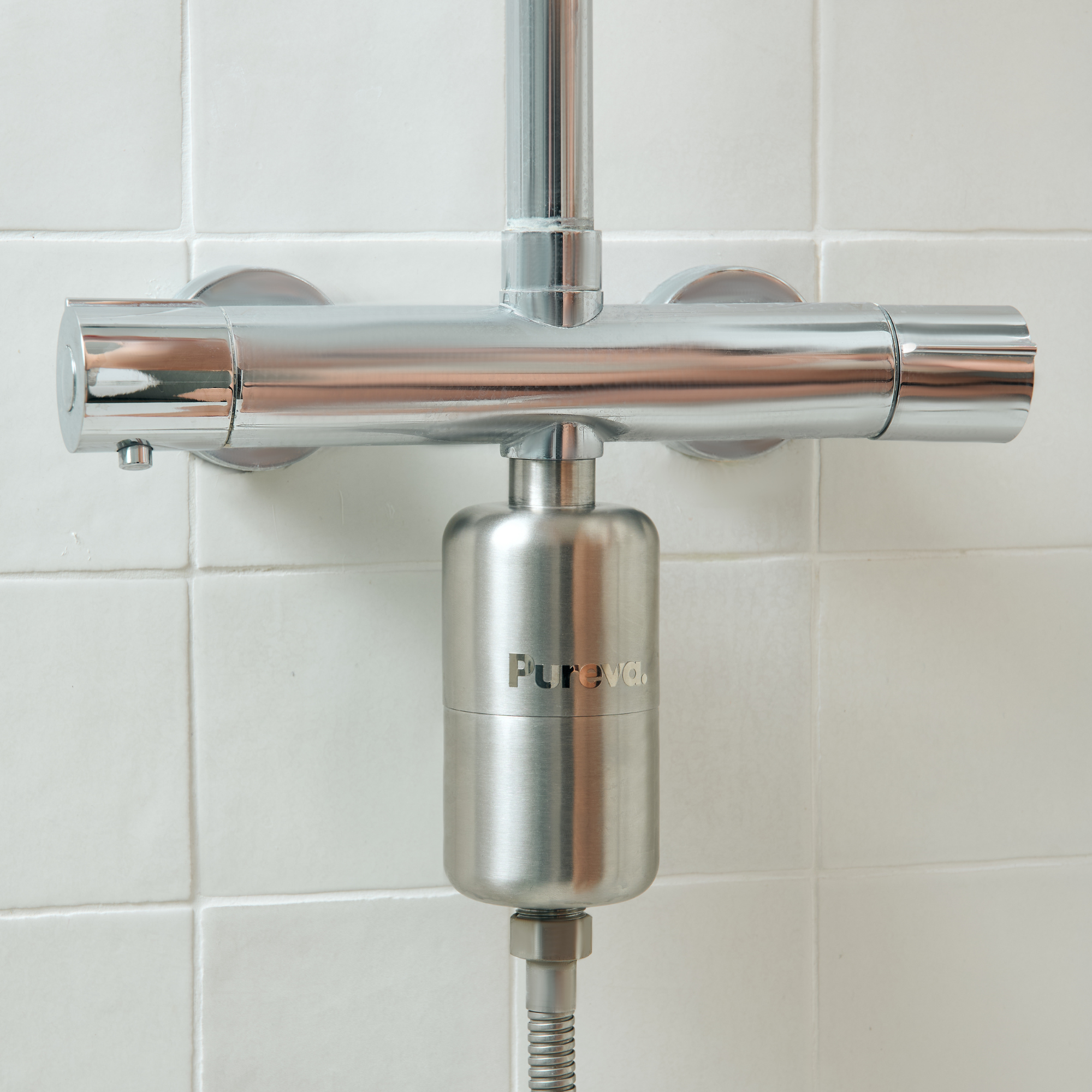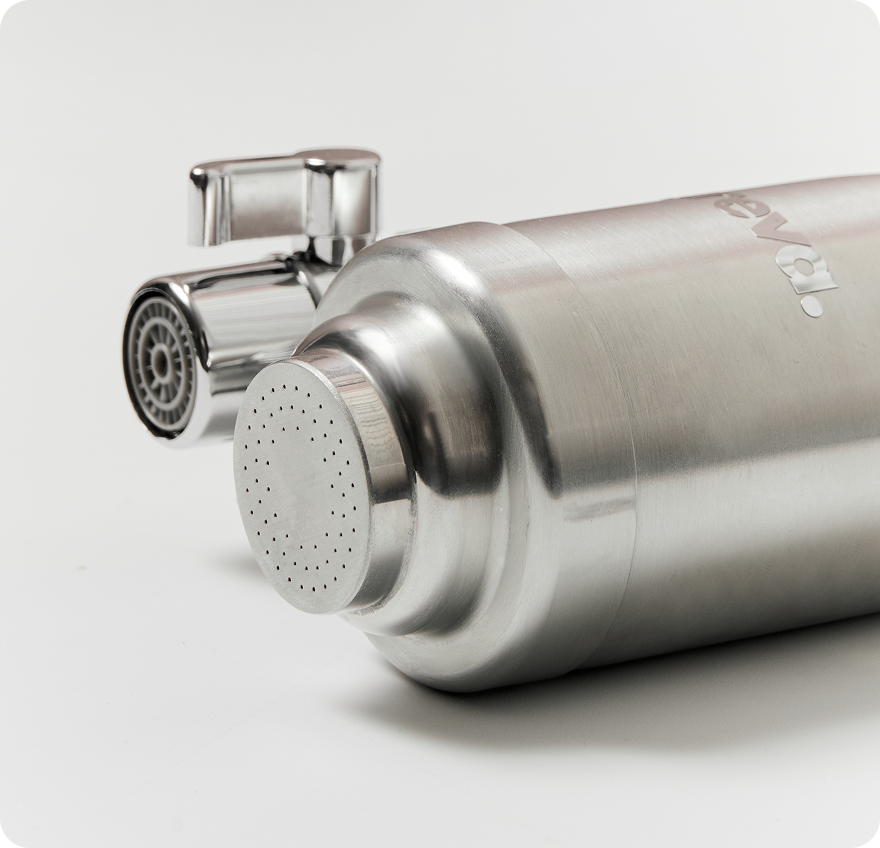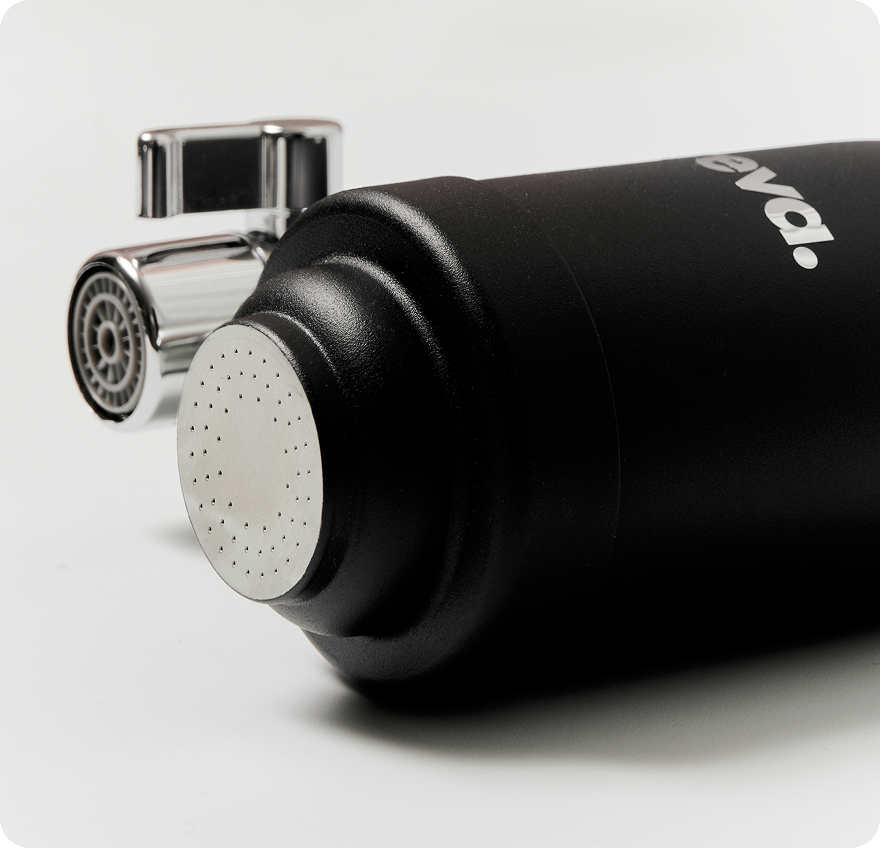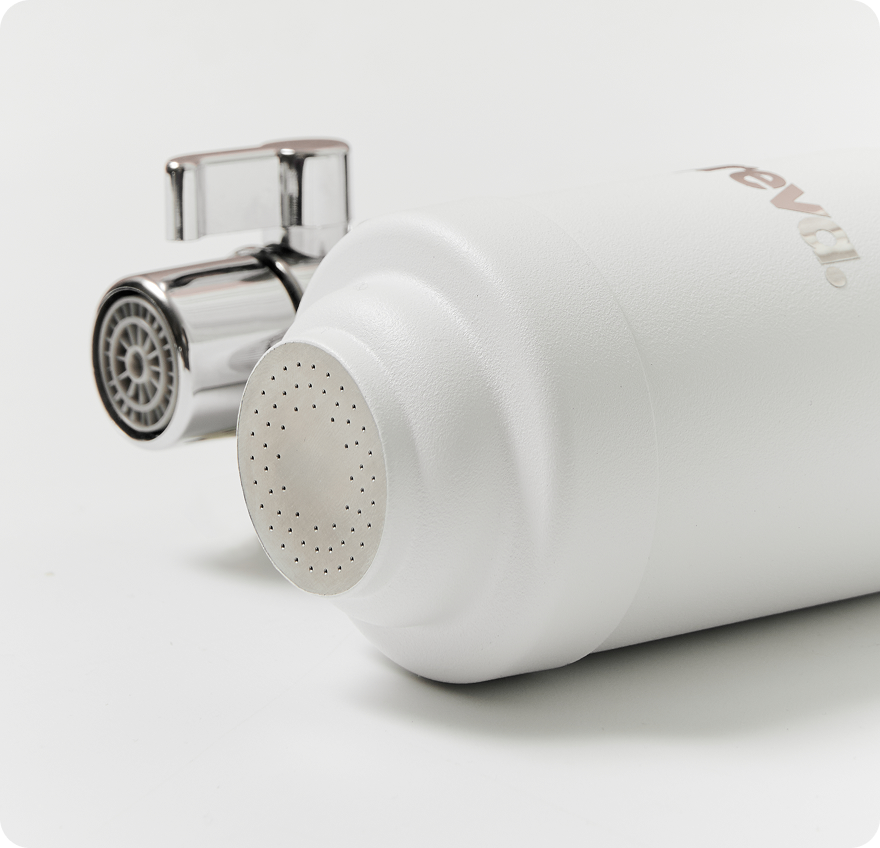Activated carbon filters are miraculous devices in their ability to remove contaminants, odors, and bad taste from tap water. But how do they work, and do you need one?
Here's a quick overview of how activated carbon filters work, what they remove, and their limitations.
How do activated carbon filters work? What do activated carbon water filters filter?
Activated carbon filters, sometimes called carbon filters, contain small pieces of carbon, in granular or block form, that have been processed to be extremely porous. Just 4 grams of activated carbon has a surface area equivalent to a football field (6,400 m²). It is this massive surface area that allows activated carbon filters to be very effective at adsorbing (essentially removing) contaminants and other substances.
When water passes through activated carbon filters, chemicals are adsorbed by the carbon, resulting in better quality water. Effectiveness depends on flow rate and water temperature. Therefore, most small activated carbon filters should be used with low pressure and cold water.
Another factor is the size of the particles the filter will allow to pass through, as this provides a secondary defense. Granular activated carbon (GAC) has no specific limit because the material is porous. Activated carbon in the form of carbon blocks, on the other hand, typically has a pore size between 0.5 and 10 microns. The problem with smaller sizes is that water flow is reduced because even water particles have difficulty passing through. Therefore, typical carbon blocks are 1 to 5 microns in size.
What do activated carbon filters filter and reduce?
Activated carbon can be effective at reducing hundreds of substances, including contaminants and other chemicals, found in tap water. However, the studies most cited by the EPA.
However, the studies most cited by the EPA and NSF claim effective removal of between 60 and 80 chemicals, effective reduction of about 30 others, and moderate reduction for 22 others.
The effective removal range is important and depends on the quality of the activated carbon used and its form (GAC vs. carbon block). Make sure you choose a filter that removes problematic contaminants present in your local tap water.
According to the EPA (Environmental Protection Agency in the United States), activated carbon is the only filtration technology recommended for removing:
-
the 32 organic contaminants identified, including THMs (chlorine by-products);
-
the 14 listed pesticides (which includes nitrates as well as pesticides such as glyphosate, also known as Roundup);
-
the 12 most common herbicides.
These are the specific contaminants and other chemicals that carbon filters remove.
Chlorine (Cl)
Most public drinking water systems in Europe and North America are highly regulated, tested, and certified for consumption. However, to make it safe, chlorine is added, which can give it an unpleasant taste and odor. Activated carbon filters are excellent at removing chlorine and the unpleasant tastes and odors associated with it. High-quality activated carbon filters can remove 95% or more of free chlorine.
For more details on this, see the information on total chlorine and free chlorine.
Chlorine should not be confused with chloride, which is a mineral composed of sodium and calcium. Chloride may actually increase slightly when water is filtered with activated carbon.
Chlorine by-products
The main concern with tap water is chlorine byproducts (volatile organic compounds), such as THMs, which are considered potentially carcinogenic. Activated carbon is more effective than any other filtration technology at removing them. According to the EPA, it removes the 32 most common chlorine byproducts. The most commonly measured in tap water reports is total THMs.
Chloride (Cl-)
Chloride is a naturally occurring mineral that helps maintain blood volume, blood pressure, and the pH of body fluids. However, excessive chloride levels in water can give it a salty taste. Chloride is a natural component of tap water with no adverse health effects. It is part of the drinking water chlorination process to eliminate harmful bacteria and viruses. It does not need to be filtered or removed, but activated carbon typically reduces chloride by 50 to 70 percent. In exceptional cases, chloride levels can actually increase.
Pesticides
Pesticides are substances designed to control pests, including weeds, that end up in groundwater, lakes, rivers, oceans, and sometimes tap water despite treatment. Activated carbon has been tested to remove the 14 most common pesticides, including chlordane, chlordecone (CLD/Kepone), glyphosate (Roundup), heptachlor, and lindane. This also includes nitrates (see below).
Herbicides
Herbicides, also known as weedkillers, are substances used to control unwanted plants. Activated carbon has been tested to eliminate 12 of the most common herbicides, including 2,4-D and atrazine.
Nitrate (NO32-)
Nitrate is one of the most important compounds for plants. It is a rich source of nitrogen, which is essential for plant growth. Nitrate has no known harmful effects on adults except at extremely high concentrations. However, excessive nitrate concentrations in water can cause methemoglobinemia, also known as "blue baby disease" (lack of oxygen).
Nitrate in tap water comes primarily from fertilizers, septic systems, and manure storage or application. Activated carbon typically reduces nitrate by 50 to 70%, depending on the quality of the filter.
PFOS
PFOS is a synthetic chemical used, for example, in firefighting foams, metal plating, and water repellents. Over the years, it has entered the environment and drinking water sources during several major incidents in North America and Europe. According to a 2002 study by the OECD Environment Directorate, "PFOS is persistent, bioaccumulative, and toxic to mammalian species." Activated carbon has been shown to be effective in removing PFOS, as well as PFAS, PFOA, and PFNA.
Phosphate (PO43-)
Phosphate, like nitrate, is essential for plant growth. Phosphate is a powerful corrosion inhibitor. High concentrations of phosphate pose no risk to human health. Public drinking water systems typically add phosphates to drinking water to prevent lead and copper from leaching from pipes and fixtures. High-quality carbon filters typically remove 70 to 90 percent of phosphates.
Lithium (Li+)
Lithium is found naturally in drinking water at very low levels. Lithium has been found to have antidepressant properties and has been used as an antidepressant for many years. At higher doses, lithium has toxic effects on the thyroid gland and kidneys. Thyroid toxicity, caused primarily by lithium's interference with the gland's release of thyroid hormones, affects up to 19% of treated patients.
There is also a potential link between lithium in drinking water and an increased risk of autism.
Lithium can be found in continental saline waters, geothermal waters, and oil and gas field brines. High-quality activated carbon filters, such as Pureva One, reduce lithium by 70 to 90%.
Drugs
The ubiquitous use of medications has resulted in a relatively continuous release of drugs and their metabolites into wastewater. Current observations suggest that exposure to very low concentrations of drugs in drinking water is very unlikely to result in appreciable risks to human health, as drug concentrations detected in drinking water are several orders of magnitude below the minimum therapeutic dose. Drugs can be released into water sources from the effluent of poorly controlled manufacturing or production facilities, primarily those associated with generic drugs. High-quality carbon block filters, such as Pureva One, remove 95% of drugs.
Microplastics
Microplastics are the result of plastic waste from various sources. The precise effect of microplastics on human health is difficult to determine for various reasons. There are many types of plastics, as well as different chemical additives that may or may not be present. When plastic waste enters waterways, it does not degrade like natural materials. Instead, exposure to sunlight, reaction with oxygen, and degradation by physical elements such as waves and sand cause plastic debris to break down into small particles. The smallest microplastics identified in public reports measure 2.6 microns.
A 2 micron carbon block filter, such as Pureva One, removes all microplastics larger than 2 microns.
What activated carbon does not filter
Despite the 80+ contaminants that activated carbon filters, there are also materials that it fails to remove:
Beneficial minerals such as magnesium, potassium, sodium, and calcium (this means TDS is not generally reduced with activated carbon). Dissolved solids, including minerals, salts, or metals such as iron, which are not considered contaminants. Certain microbiological contaminants such as coliforms, viruses, and small bacteria. Inorganic contaminants such as arsenic and asbestos (partial reduction only). Radionuclides, although they are reduced. Activated carbon water filters do not generally reduce minerals or TDS (Total Dissolved Solids), which is a common measurement used by water filter sellers. Read our separate article on TDS and minerals in tap water. Learn more about TDS and minerals in tap water.
Microbiological contaminants This is one of the most common drinking water problems in countries with poor infrastructure, particularly for waterborne gastrointestinal illnesses (e.g., diarrhea that visitors unaccustomed to the local water may contract).
Natural water provides a favorable environment for the growth of bacteria and viruses. Viruses are the smallest form of microorganisms capable of causing disease, especially those of fecal origin that can be transmitted to humans through waterborne transmission; bacteria are generally single-celled microorganisms that can also cause health problems in humans, animals, or plants.
Generally, chlorine in tap water kills all bacteria and viruses, which is why it is not necessary to filter these substances for public water in Europe and North America. Activated carbon filters alone are generally not sufficient to remove such contaminants.
Activated carbon filters do not filter/remove coronaviruses that can cause COVID-19. But don't worry, coronaviruses have never been found in disinfected tap water. Learn more about how to protect yourself from coronaviruses and COVID-19.
Arsenic Commonly found in some areas where groundwater has been contaminated. Activated carbon removes 30 to 70% of arsenic, but is not sufficient in areas where it is reported to be a real problem.
If your local water contains one or more of these substances, you need to make sure the filter reduces them to a safe level. Most often, this means combining activated carbon with other types of filters such as ion exchange. Learn more about the best filtration technologies.
Conclusion on carbon filters
Activated carbon is an exceptional material and technology for water filtration and solves many problems, but not all.
Make sure you understand the limitations of activated carbon and choose a filter based on your specific needs. High-quality activated carbon filters, such as those used by Pureva One, use treated materials to improve filtration efficiency, including lead, other heavy metals, microplastics, and certain bacteria. Activated carbon filters retain beneficial minerals and generally do not reduce TDS in tap water unless combined with other filtration technologies. Activated carbon or carbon filters are also used as one of the steps in most reverse osmosis (RO) systems, whole-house filters, UV filters, and other filtration technologies. If you're looking for a high-quality, affordable activated carbon water filter, try Pureva One.

